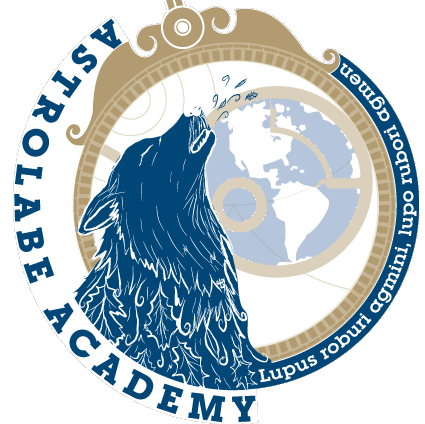Blog
The Winding Road to Unschooling
Like many who are homeschooling or are thinking about it, I headed down this path for several reasons. Regardless, of what lies behind that decision, we all have one worthy goal in mind – to foster a love of learning in our children and to help them develop the tools and knowledge they will need as adults. While one of my biggest frustrations was the methods of institutional instruction, I did exactly what so many others before and after me have done and continue to do – I simply brought school home. I followed the school routine exactly. It was, after all, what I knew.
You will get up, straighten your room, have breakfast and be ready to start school at 9AM. We will take a lunch break at Noon and continue “learning” until 2:30. We will study language, math, science, social science, etc.
My son had different expectations and his frustrations with the same old system grew into all sorts of acting out—just like he did every day when I picked him up from school and the next morning as we got ready to go. What was I missing? I was pulling my hair out and desperately looking for answers. We tried different approaches and different curricula to no avail. There had to be a better way.
Meanwhile, I was disenchanted and increasingly more frustrated by the chopping up of subjects into unrelated bits of information that we cram into the heads of our children. Surely, this wasn’t what learning should look like.
We tried the approach of spending a whole day on one subject. That worked a bit better. We could concentrate a whole day on one thing, following leads and distracting tidbits as long as they related to the main topic. That worked great until we got to those days with topics we didn’t enjoy—like math. The struggle continued. He knew that he didn’t like it, and I knew there had to be something better—a more holistic approach to learning.
While I was continuing to research teaching methodology, I was also working towards an education degree. My frustrations soared! On one hand, I was struggling with finding a learning method that kept my then two homeschooled children wanting to learn, and on the other, I was being taught how to manage, reprimand, and train school children to sit down, shut up and “learn” by having disconnected bits of information stuffed into their heads. My brain nearly exploded with the irony of it. I switched my undergraduate degree with an eye towards a Master’s in Education where I might begin to make a difference and I started looking very seriously at alternatives to conventional education for my children and others who were struggling with the status quo.
My research led me to a promising “un” methodology as it were—unschooling. The definition all those years ago was very vague. I wasn’t aware at the time of self-directed learning and while it initially sounded quite intriguing, Google revealed a very simplistic explanation at best. Self-directed learning was referred to as unschooling in the homeschool world and was defined as a method of learning involving play and leaving it all up to the kid.
“What? No! How could they possibly learn anything?”
Back to the drawing board
We continued in this way until I was offered a short-term, 6-month consulting job with my previous work colleagues in the NOAA’s Ocean Exploration office—an offer I didn’t want to turn down. But it came with a catch. I had to work there, in an office that was a three-hour commute away, part of the time. So, three days a week I commuted to NOAA and my Dad watched the kids. Three days a week there was no official homeschool. The job expanded and, for a year and a half, guess what the kids did?
NOTHING!
I had moments of sheer panic, many moments if I’m being honest.
“They were falling so far behind!”
At first, there were videos and anime and lots of manga reading and building things with Legos®. I wanted to regain control, but I was too busy and too tired. Then, they started asking questions, requesting specific books, and asking for technology tools to develop their books, stories, and videos. Asking for help to develop a website, working on a business plan, applying for a business Ag loan, asking for special trips to this and that, relating to something they were interested in. I was floored. They were learning and creating. All on their own. Without me, and while Pop-pop either joked with them or dozed in the living room chair, they were learning.
And. It. Was. Amazing.
When I described the phenomenon to a friend of mine, her comment was “Well, of course, your kids would go all academic.” She didn’t get it. Mine are no different from any other kid. At first, they just burned up Netflix, YouTube, and Legos®. But then there was a question, it caused a spark, and it didn’t take much to become a forest fire. Kids, all of them, are hungry to learn—starving in fact. They just have to remember that. This is exactly what happens when you leave behind the established curriculum. This is self-directed learning—finding that tiny little spark of curiosity and puffing gently on it until it takes hold and starts to burn. Then you get out of the way, except to encourage it, make appointments with more people who can fan those flames, drive them places to keep it going, and guide them. If it burns itself out, you look for the next little hint of it and repeat the process. Meanwhile, they are learning in context, all the little pieces of whatever it is working together, and it all makes sense—even math.
It wasn’t long before, I had one child with a market and dairy goat business who was studying genetics, monitoring breeding, learning herbal remedies and natural care, keeping his business records, and working on a website to help with marketing. He was also interested in wolves and wolf conservation. In that moment he was torn between becoming a veterinarian and a wildlife conservationist. The other child was an avid Indiana Jones fan and together we studied all things archeology. At 7 years old, he held a forty-minute conversation with a high school religion and mythology teacher. He’s a philosopher and loves to study culture, religions, mythology, and more. He was very interested in Minecraft® and started making his own “let’s play” videos posting them to his YouTube channel. What was interesting, at the time, he wasn’t reading yet. This autistic, dyslexic child taught himself to read at the ripe age of 11—when he was ready.
They may sound special (and to me they are) but these kids are no different than yours. The only difference is how they were allowed to learn and what they were trusted with. Read that again—“what they were trusted with.” I had a lot of bad training and brainwashing to let go of. But I did, and in doing so it opened their minds, and that opened mine.

